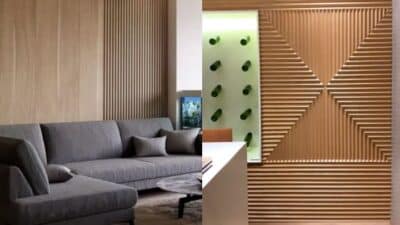
Key Takeaways
- Surface finishing is crucial for extending product life and visual appeal.
- Choosing between powder coating and traditional painting requires understanding each method’s strengths.
- Protective techniques in surface finishing shield materials from environmental damage.
Table of Contents
- Introduction to Surface Finishing
- What is Powder Coating?
- Advantages of Powder Coating
- The Process of Powder Coating
- Understanding Traditional Painting
- Comparing Powder Coating and Painting
- Choosing the Right Service for Your Needs
- Key Trends in Surface Finishing Technology
Introduction to Surface Finishing

Surface finishing could be viewed as the unsung hero in industries critical to modern living. This process involves applying a protective and aesthetic layer to the surfaces of products, enhancing their durability and appearance. Techniques such as powder coating and painting are used extensively, providing functional and cosmetic benefits. By implementing suitable surface treatments, manufacturers not only prolong the utility of the items but also meet consumer expectations for quality and design. In the diverse world of manufacturing and construction, surface finishing serves as the last touch that can profoundly influence a product’s performance and lifespan. It’s an art and science that plays a pivotal role in every sector, from automotive to consumer electronics. Whether adopting powder coating and painting, these procedures transform basic materials into completed products that are aesthetically pleasing and resilient to environmental stresses. To guarantee that the finished product satisfies functional and aesthetic criteria and has a longer shelf life, it is essential to comprehend the subtleties of each technique. Different finishing services are necessary to decide on project durability and visual appeal. The correct surface treatment method can make or break a project, enhancing toughness and aesthetic value. This exploration explores established and innovative surface finishing methods.
What is Powder Coating?
Powder coating is an innovative solution that dispenses with the need for solvents found in liquid paint formulations. It utilizes a dry, powdered substance that is applied using an electrostatic method. This technique ensures a uniform application that coalesces into a strong, even coating upon curing. As a method developed for industrial use, its wide acceptance is due to its efficacy and environmental advantages—making it a sought-after choice for industries seeking practical and sustainable finishing methods.
Advantages of Powder Coating

The benefits of powder coating are striking, starting with its resistance to wear and tear. The resulting finish boasts exceptional toughness and is less prone to chipping and scratching than liquid paint. Because of its resistance to severe environments, it is perfect for outdoor and industrial products. Additionally, powder coating releases negligible VOCs, presenting a greener option for environmentally conscious manufacturers. It requires less maintenance and cleaning, ultimately providing a cost-effective and robust solution for protective finishes.
The Process of Powder Coating
Crafting a powder-coated finish begins with meticulous surface preparation, which includes cleaning and degreasing the item. Some processes may require blasting to prepare the surface properly. Then, the powder is electrostatically applied, ensuring comprehensive coverage. The transformation occurs in the curing stage, where heat facilitates the powder’s adhesion, forming a cohesive layer of protection and appeal. This process achieves durable results and optimizes resource use, reducing waste.
Understanding Traditional Painting

Despite technological advances, traditional painting remains a fixture in the arsenal of finishing techniques. It involves layering liquid paint through various application methods like brushing, rolling, or spraying. Traditional painting offers a broader palette and textural options, requiring skill for optimal application and sufficient drying time. These characteristics make it particularly useful for projects where visual variety and detailed customization are paramount.
Comparing Powder Coating and Painting
When juxtaposing powder coating and painting, several factors are key: longevity, environmental impact, and customization flexibility. Powder coating excels in durability and ecological effects, providing a resilient finish with a greener profile. Conversely, with its extensive color range and texturing capabilities, traditional painting may be more suitable for bespoke projects demanding intricate detail and customizable aesthetics.
Choosing the Right Service for Your Needs


Selecting a suitable surface finishing service requires considering multiple criteria, such as material type, intended application, exposure conditions, and budget constraints. Engaging with professional advisors ensures tailored solutions that align with both practical needs and desired outcomes. The decision ultimately hinges on balancing functional requirements with aesthetic preferences, and often, expert guidance assists in navigating these choices.
Key Trends in Surface Finishing Technology
The realm of surface finishing is ever-evolving, with continuous trends influencing industry practices. Innovations like nanotechnology are redefining the potential of coatings to provide unprecedented levels of resistance to environmental factors. Keeping abreast of emerging trends and integrating innovative coating technologies empowers industry players to leverage state-of-the-art solutions. Staying informed about these developments enables more sustainable and efficient execution of surface finishing strategies.
- 3shares
- Facebook0
- Pinterest3
- Twitter0



